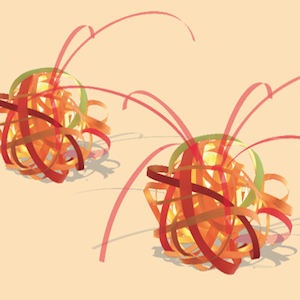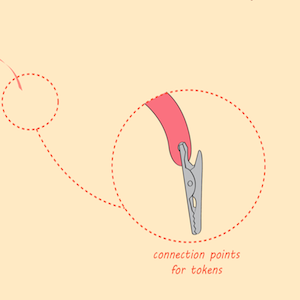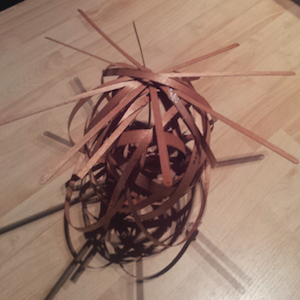Amarant
encouraging the application of humour between informal caregivers and people with dementia
Information
Author: Blom, J.H.E.
Contributor: Visch, V.T., Sonneveld, M.H., Aarts, C.
Faculty: Industrial Design Engineering
Department: Design Engineering
Programme: Design for interaction
Type: Master thesis
Date: 16-08-2014
Keywords: Dementia | Carer | Humour | Trigger | Emphasise | Experience
Abstract
In order to relieve the burden of providing informal care there are several coping possibilities of which a very powerful one is humour. Next to the positive effects humour can have on one’s physical health such as reducing the release of stress hormones as well as massaging one’s internal organs it also has beneficial psychological effects. It can enlighten the emotional burden of the situation and positively influence social relationships. Although humour can be very beneficial, informal caregivers often experience a lack of humour in the care giving relationship. They feel as if there is nothing left to laugh about in the burdensome situation of dementia and informal caregiving. However, research within this project has shown that there actually are quite a few moments of humour between the informal caregiver and person with dementia. It is in this discepancy between the perception of the informal caregiver and the actual situation that the opportunity for design is found.
By taking the personal humour experience of the informal caregiver and the person suffering from dementia as a starting point the concept of Amarant aims to emphasize the positive experience that is triggered by humour. By doing so it stimulates awareness on the power of humour and the value of sharing a laugh. This awareness stimulates and support the informal caregiver to apply humour as a powerful tool to enlighten the situation for both himself as well as for the person who is suffering from dementia.
The concept is based on the model of persuasive game design. It stimulates and facilitates the informal caregiver to capture memories of humour in the form of tokens. These tokens form a visual and tangible representation of the experience of humour. A token can contain the stimulus, such as a funny cartoon from the newspaper but can also form a representation of the stimulus, such as a cap of a coke bottle that represents that time when you opened a bottle and it sprayed all over your face. Furthermore it is possible to create a token yourself by the use of several creative materials that are provided in the concept. The package of creative materials is developed by doing several explorative tests on how people capture memories of humour in the form of tokens. The set of creative materials consists of markers and stickers which are simple, sketchy depictions of elements such as animals, people and objects.
The collection of tokens is displayed in the house. By doing so, the user can be triggered to interact with the concept at any time. Additionally, the user is also subtly confronted with it, even when not directly interacting with it. It can unconsciously trigger the positive emotions of the collected memories. Furthermore, it can trigger and inspire them in the application of humour in situations, in which they might not have thought of applying it before.
In order to support the informal caregiver and stimulate him to interact with the concept over a longer period of time the concept includes so called ‘inspirational cards’. These cards provide specific questions about the experience of humour. By providing the informal caregiver with a more specific direction every now and then, it is easier for them to recall memories of humorous events. Examples of queestions on the inspirational cards are: ‘What was the last situation in which you wanted to contain your laugh but just couldn’t?’ and “Do you remember having a funny slip off the tongue? What was it?”. The backside of these inspirational cards can be used for token creation. Room is provided to create a visual as well as to write down a short description. The created token can then be connected to the collection object.



